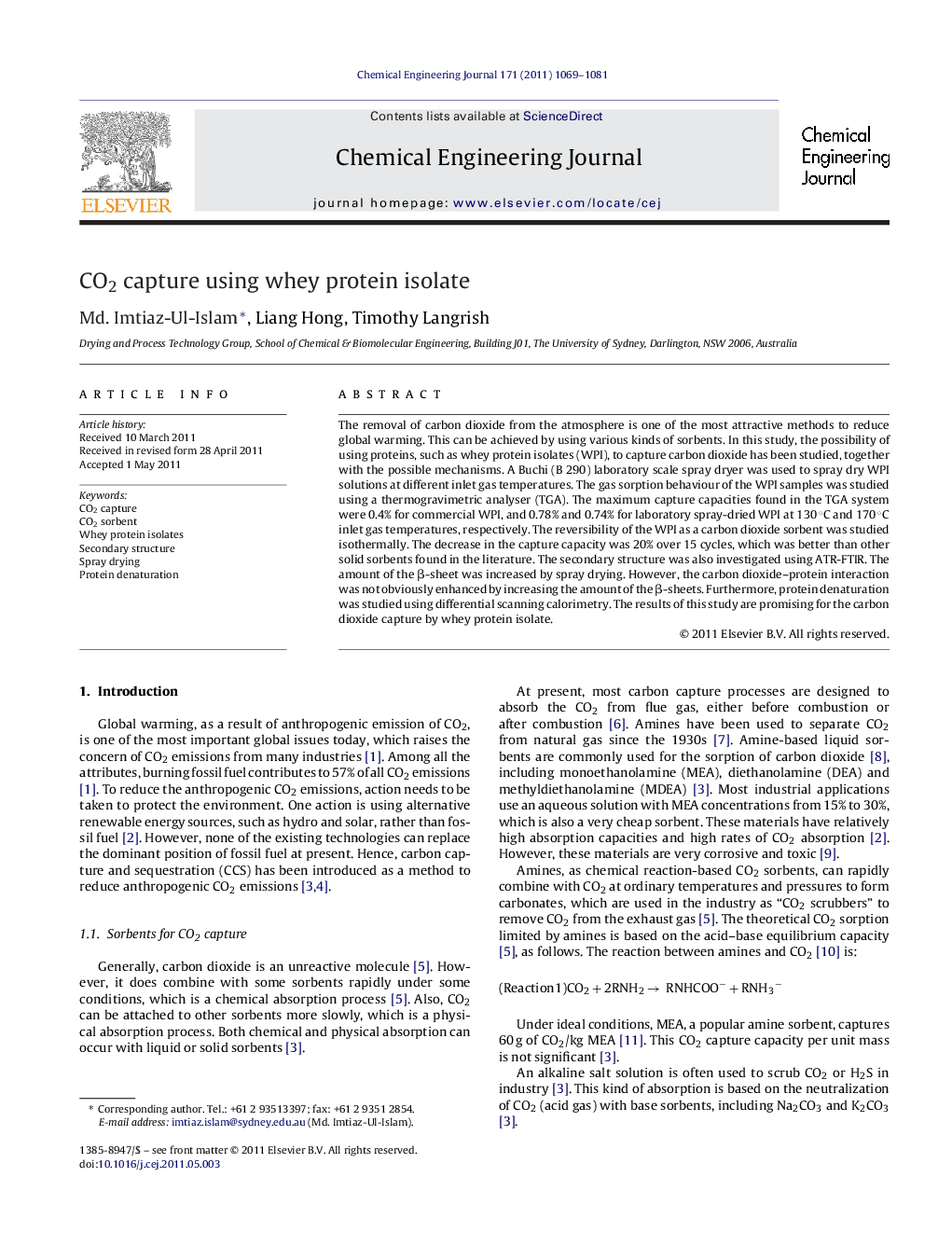| Article ID | Journal | Published Year | Pages | File Type |
|---|---|---|---|---|
| 150901 | Chemical Engineering Journal | 2011 | 13 Pages |
The removal of carbon dioxide from the atmosphere is one of the most attractive methods to reduce global warming. This can be achieved by using various kinds of sorbents. In this study, the possibility of using proteins, such as whey protein isolates (WPI), to capture carbon dioxide has been studied, together with the possible mechanisms. A Buchi (B 290) laboratory scale spray dryer was used to spray dry WPI solutions at different inlet gas temperatures. The gas sorption behaviour of the WPI samples was studied using a thermogravimetric analyser (TGA). The maximum capture capacities found in the TGA system were 0.4% for commercial WPI, and 0.78% and 0.74% for laboratory spray-dried WPI at 130 °C and 170 °C inlet gas temperatures, respectively. The reversibility of the WPI as a carbon dioxide sorbent was studied isothermally. The decrease in the capture capacity was 20% over 15 cycles, which was better than other solid sorbents found in the literature. The secondary structure was also investigated using ATR-FTIR. The amount of the β-sheet was increased by spray drying. However, the carbon dioxide–protein interaction was not obviously enhanced by increasing the amount of the β-sheets. Furthermore, protein denaturation was studied using differential scanning calorimetry. The results of this study are promising for the carbon dioxide capture by whey protein isolate.
► We investigated CO2 sorption behaviour of WPI powders at atmospheric conditions. ► CO2 sorption of commercial and spray-dried WPI was studied in solid state. ► The reversibility of the WPI as a carbon dioxide sorbent was studied isothermally. ► The spray-dried WPI showed higher CO2 capture capacity than commercial WPI. ► Spray drying was found to increase the β-sheets/α-helix ratio.
